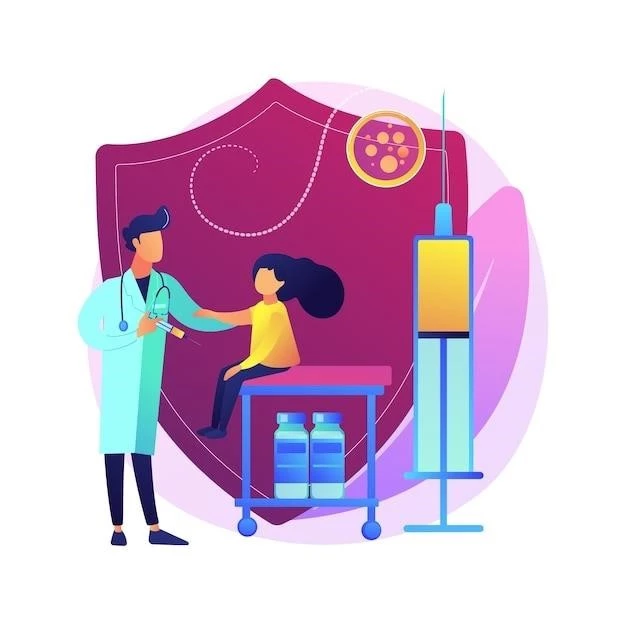Introduction to Sarcoidosis
Sarcoidosis is a multisystem disorder that can affect practically any organ of the body․ The hallmark of sarcoidosis is the presence of noncaseating granuloma, a cluster of macrophages, epithelioid cells, mononuclear cells, and CD4 T cells with a few CD8 T cells in the peripheral zone․1٫ 2 The etiology of sarcoidosis is not known with certainty despite decades-long effort․
Overview of Sarcoidosis
Sarcoidosis is a complex multisystem disorder characterized by the formation of noncaseating granulomas in various organs․ This condition primarily afflicts young adults and can affect organs such as the lungs, skin, eyes, and lymph nodes․ While the etiology of sarcoidosis remains unknown, its hallmark feature is the presence of granulomas, which can lead to a wide range of symptoms and complications depending on the organs involved․
Clinical Presentation of Sarcoidosis
Sarcoidosis is a complex disease involving the formation of granulomas in various organs․ It predominantly affects young adults and can present with symptoms such as skin lesions, lung issues, eye inflammation, and lymph node enlargement․ Early diagnosis and appropriate management are crucial in handling this condition effectively․
Major Organs Affected by Sarcoidosis
Sarcoidosis is a systemic inflammatory disorder that can impact multiple organs, with common sites of involvement including the lungs, skin, eyes, lymph nodes, liver, spleen, and heart․ Lung involvement, characterized by granulomas and fibrosis, is a frequent manifestation of sarcoidosis․ Awareness of potential organ involvement is crucial for early detection and effective management of the disease․

Symptoms of Sarcoidosis
Recognizing the symptoms of sarcoidosis is essential for timely diagnosis and management․ Symptoms can vary depending on the organs involved, commonly presenting as skin lesions, respiratory issues, eye problems, and swollen lymph nodes․ If you experience persistent cough, skin rashes, shortness of breath, or unexplained fatigue, seek medical evaluation promptly․
Common Symptoms of Sarcoidosis
Sarcoidosis commonly manifests through symptoms such as skin rashes, persistent cough, shortness of breath, fatigue, swollen lymph nodes, eye inflammation, weight loss, night sweats, and skin lesions․ Recognizing these common signs early on can aid in prompt diagnosis and appropriate management to prevent complications․

Diagnosis and Treatment of Sarcoidosis
Diagnosing sarcoidosis involves a thorough evaluation of symptoms, physical examination, imaging tests, and sometimes biopsy․ Treatment options may include medications to reduce inflammation, manage symptoms, and prevent complications․ Regular monitoring and follow-up with healthcare providers are essential for effective management of sarcoidosis․
Approaches to Diagnosing Sarcoidosis
Diagnosing sarcoidosis typically requires a combination of physical exams, imaging studies like X-rays or CT scans, blood tests to evaluate organ function, and sometimes a biopsy of affected tissue․ These approaches help healthcare providers confirm the presence of granulomas and assess the extent of organ involvement․ Early and accurate diagnosis is crucial for initiating appropriate treatment and preventing complications;
Treatment Options for Sarcoidosis
The treatment of sarcoidosis typically involves medications to reduce inflammation and manage symptoms․ Commonly used drugs include corticosteroids, immunosuppressive agents, and biologics․ In some cases, treatment may not be necessary if the condition is mild or self-limiting․ Consultation with healthcare professionals is crucial to determine the most suitable treatment plan based on individual needs and the extent of organ involvement․
Prognosis and Management of Sarcoidosis
Effective management of sarcoidosis involves a multidisciplinary approach tailored to individual needs․ Regular monitoring to assess disease progression, manage symptoms, and prevent complications is essential․ Prognosis varies depending on the extent of organ involvement and the response to treatment․ Collaborating closely with healthcare providers can help optimize outcomes and quality of life for individuals with sarcoidosis․
Prognosis of Sarcoidosis
The prognosis of sarcoidosis can vary depending on the individual’s overall health and the extent of organ involvement․ In many cases, the disease resolves on its own or with treatment, leading to improved outcomes․ However, some individuals may experience chronic symptoms or complications․ Regular monitoring and adherence to treatment plans are essential for managing sarcoidosis effectively and optimizing long-term prognosis․
Management Strategies for Sarcoidosis
Managing sarcoidosis involves a comprehensive strategy that may include medications to reduce inflammation, alleviate symptoms, and, in some cases, prevent organ damage․ Regular follow-up appointments with healthcare providers are crucial to monitor disease progression, adjust treatment plans as needed, and address any emerging complications․ Lifestyle modifications, such as maintaining a healthy diet and regular exercise, can also support overall management of sarcoidosis․
